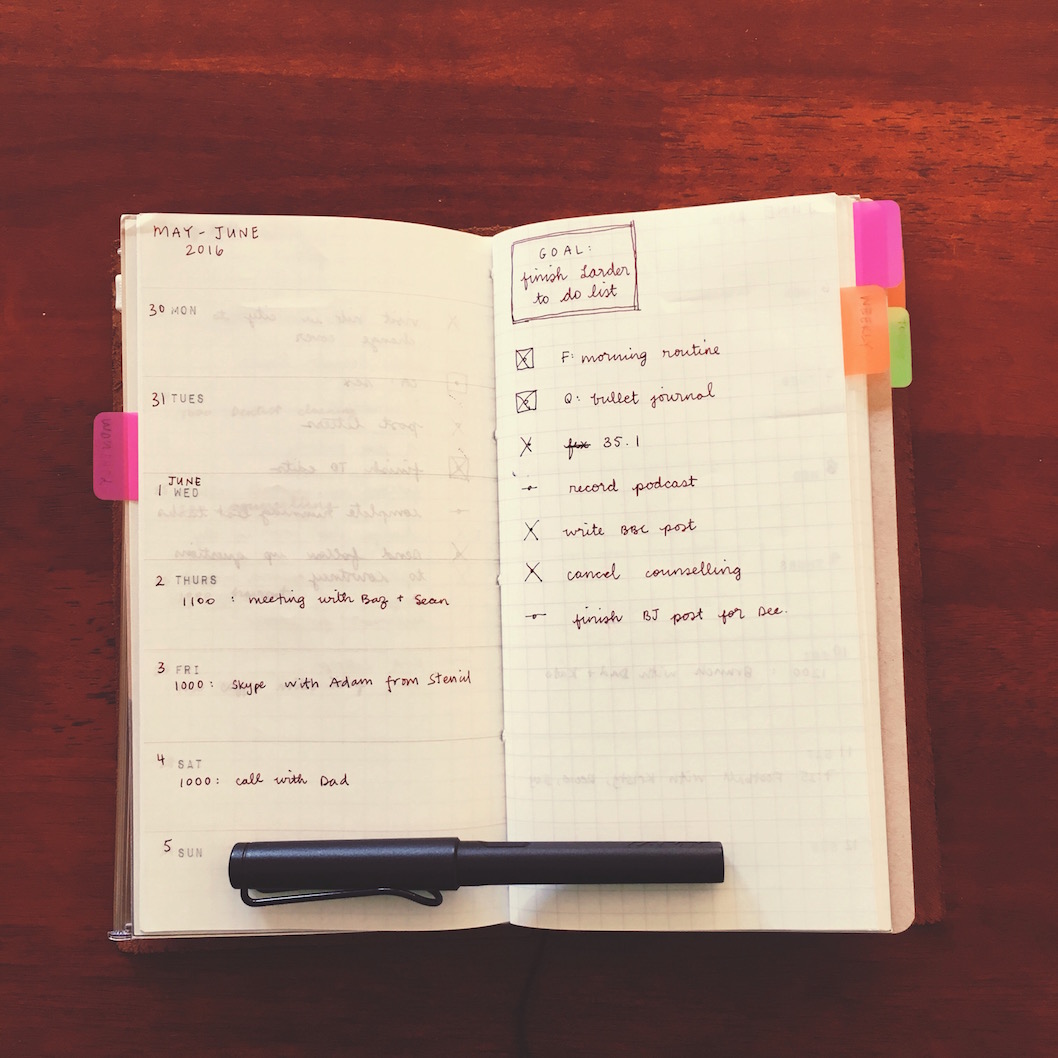07 Jul 2016
By Belle
Why I was less productive when I stopped using a daily to do list

I work from home, both on Exist and as a freelance content marketer. I make my own hours, and apart from a couple of article deadlines for my clients each week, I generally don’t have things that are “due” each day. I operate using the idea of getting my work done as quickly and consistently as I can, without sacrificing quality.
When I recently started using paper and pen to stay on track , I also started using daily to do lists. Most of the analogue systems I found for getting organised hinged on the idea that you would need to plan and complete particular tasks every day. But with such a flexible schedule, I soon found my daily lists getting shorter, or even being empty. Many days I had nothing due, so I could choose what to work on rather than having to plan around deadlines.
I decided the daily to do list wasn’t for me. It didn’t suit my kind of schedule, and there was no good reason why I had to stick with it.
So I switched to using a weekly to do list only. At the start of each week I wrote down anything with a deadline that week, and a few tasks I hoped to get done once my deadlines were covered.
But it didn’t take long before I realised this approach wasn’t working. It didn’t affect my client work, as I still worked on those articles early in the week to make sure they were submitted by their end-of-week deadlines, but once that work was done, I felt lost. I spent more time wondering what to work on next, or just not working at all.
Even though it seemed to fit my schedule better, only having a “bigger picture” list of tasks to choose from made it harder for me to decide what to work on each day.
Despite not needing to do anything particular on most days, I switched back to using a daily to do list and I’ve seen my productivity increase. In fact, I’ve found, somewhat counterintuitively, that writing a long to do list each day helps me get more done.
Because my main problem with productivity is not knowing what to work on next, I can overcome that by always having something else on my to do list.
I’ve also found it helpful to always have different kinds of tasks on my daily list. I’ve never been able to use a calendar planning method (i.e. planning tasks to be done at a specific time on a specific day) because I let my emotions affect what I work on, and when. I might plan 10 tasks for one day, but if most of them are writing tasks and I’m not in the mood for that kind of work, I won’t get much done.
Having programming, writing, editing, admin, errands, and housework to choose from means there’s always something I’ll want to do more than the rest, so I can be productive every day.
I’ve also stopped migrating tasks that aren’t time sensitive. If I don’t get everything done one day, I cross out and forget anything that has no pressing deadline, so I can create a fresh to do list he next day. I use an app to keep track of my long-term tasks and lists of ideas so I can use my paper list for just the tasks I want to work on each day.
Subscribe Keep up to date with the Exist blog. Delivered to your inbox.